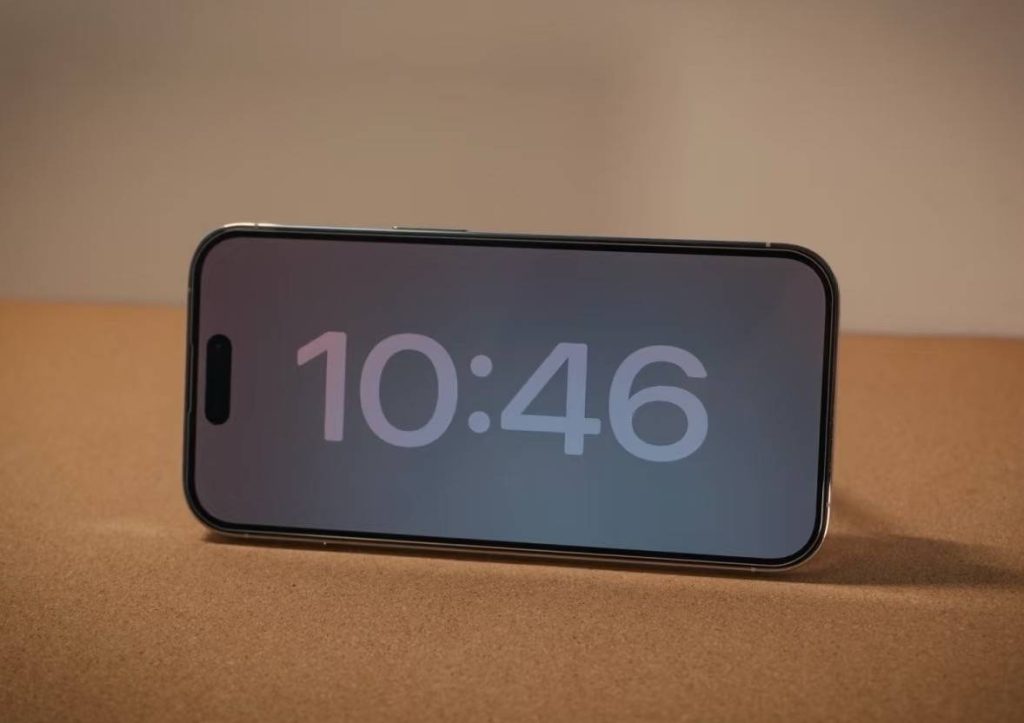OLED and LCD are the prevailing display technologies, each with distinct advantages and limitations. This article will provide a quick overview of the pros and cons of OLED compared to LCD.

Advantages of OLED Screens:
True Blacks and Superior Contrast
Unlike LCD screens, where the liquid crystal layer cannot completely block the backlight, resulting in a dark gray appearance for black, OLED pixels can individually emit light and completely turn off. This allows for truly deep blacks. Studies show that OLED displays can achieve a contrast ratio of up to 1,000,000:1, significantly higher than LCD’s 1,000:1 to 5,000:1. This high contrast is especially noticeable when viewing High Dynamic Range (HDR) content or dark scenes, creating a more immersive visual experience. For instance, in movies, OLED makes night or dark scenes appear much more realistic.
No Light Leakage
Traditional LCD displays rely on a uniform backlight system to illuminate the entire screen surface. Unfortunately, this design often causes light to seep through tiny gaps between the screen components and the device frame, leading to uneven brightness and distracting bright spots at the edges. OLED displays completely eliminate this issue as they don’t require a backlight layer. Each pixel can individually emit light, ensuring consistent illumination across the entire display surface without any unwanted light spill.
Ultra-Thin and Lightweight Design
OLEDs have a simple structure, consisting only of thin layers of organic material. Compared to LCD screens, which require a backlight unit, light diffuser films, liquid crystal layers, and color filters, the architecture of OLED displays is significantly simplified. This streamlined design enables manufacturers to create displays that are up to 50% thinner than equivalent LCD panels, contributing to sleeker device designs and reduced overall weight.
Flexibility and Innovative Designs
Due to the absence of rigid backlight components, OLEDs offer exceptional flexibility, allowing for curved or foldable screens. This is a characteristic that LCDs cannot achieve. High-end curved smartphones (like the Samsung Galaxy series) and foldable devices (such as the Huawei Mate X series) currently on the market predominantly use OLED technology, opening up more possibilities for device form factors and user interfaces.
Vibrant Colors
With perfect blacks and virtually infinite contrast achieved through pixel-level light control, OLED screens deliver stunning visuals and a deeper viewing experience, especially in low-light environments. In some cases, even if an OLED’s absolute brightness isn’t as high as an LCD’s, its superior contrast can make the image appear equally “bright” or even more impactful. This is particularly evident in HDR content and photography, where color reproduction is significantly better than LCD.
Independent Pixel Control
Unlike LCD’s shared backlight, OLED allows each pixel to operate independently, supporting innovative features such as “Always-On Display” mode. For example, only a fraction of pixels can be lit to show time, notifications, or battery levels, while the rest of the screen remains completely dark, saving significant battery power. This is widely used in smartwatches and mobile phones.

Lower Power Consumption
OLED power consumption varies significantly with the displayed content. When displaying dark or black backgrounds, black pixels consume no power, substantially reducing overall power consumption. For mixed content usage, OLEDs consume 20-30% less power than LCDs, directly enhancing mobile device battery life. However, when displaying entirely white content, OLEDs can consume more power than LCDs, so usage scenarios should be considered.
Fast Response Time
OLED pixels switch incredibly fast, with response times typically below 0.1 milliseconds, compared to 1-5 milliseconds for LCDs. This rapid response eliminates motion blur, making them ideal for dynamic content such as gaming and live sports broadcasts. User feedback indicates that OLEDs provide a smoother and more natural experience during fast scrolling or action scenes.
Disadvantages of OLED Screens
Shorter Lifespan
OLEDs use organic compounds that are less stable than the inorganic materials in LCDs, leading to degradation over time. Blue pixels degrade the fastest, affecting the screen’s overall color performance. Data suggests that modern OLEDs have a lifespan of 50,000-100,000 hours, whereas LCDs can last over 100,000 hours. For heavy users or long-term use scenarios, OLED’s lifespan might be a limiting factor.
Screen Flickering
OLEDs often use Pulse Width Modulation (PWM) to control brightness at low luminance levels. This involves rapidly turning pixels on and off to simulate dimmer light, which can cause flickering hundreds or thousands of times per second. While most people don’t perceive it, sensitive users may experience eye strain or headaches during prolonged viewing in dim environments.
Burn-in Risk
Perhaps the most concerning long-term issue with OLED displays is aging, where prolonged display of static images can lead to permanently visible ghost images on the screen. This occurs because pixels continuously displaying the same content will age at a different rate than surrounding pixels. Navigation bars, status icons, or frequently used application interfaces are common culprits. However, users can significantly delay burn-in effects by keeping brightness levels below 60%, using dark themes when available, and avoiding prolonged display of static images.
Relative Advantages of LCD Screens
While this article primarily focuses on comparing OLED, LCD still holds advantages in certain aspects:
- Longer Lifespan: LCDs use inorganic materials, offering a theoretically longer lifespan, making them suitable for heavy use or commercial displays.
- Higher Brightness: In bright environments, LCDs may achieve higher peak brightness, making them suitable for outdoor use.
- Lower Cost: The production cost is lower, resulting in more affordable devices, ideal for budget-conscious users.
Comparison Table
The table below summarizes the main pros and cons of OLED and LCD for easy comparison:
| Feature | OLED | LCD |
| Black Performance | True blacks, deep | Deep gray, light leakage |
| Contrast Ratio | Up to 1,000,000:1 | 1,000:1 to 5,000:1 |
| Thickness | Ultra-thin, up to 50% of LCD | Thicker, complex structure |
| Flexibility | Bendable, foldable | Rigid, not bendable |
| Power Consumption | Saves power with dark content, 20-30% lower for mixed use | Relatively stable, may save more with bright white content |
| Response Time | <0.1 ms, suitable for dynamic content | 1-5 ms, prone to motion blur |
| Lifespan | 50,000-100,000 hours, blue pixels degrade easily | >100,000 hours, stable |
| Flickering & Burn-in | May flicker at low brightness, prone to burn-in | No flickering, no burn-in risk |
| Suitable Scenarios | Entertainment, gaming, design | Outdoor, commercial, long-lifespan requirements |
Recommendation
Based on usage needs, OLED is better suited for entertainment purposes, such as watching movies, gaming, or for users who seek innovative designs. LCD, on the other hand, is more suitable for scenarios requiring high brightness, a long lifespan, or for users with budget constraints, such as outdoor displays or commercial equipment. In the future, with technological advancements, OLED’s lifespan and burn-in issues are expected to improve through new materials, while LCD may continue to maintain its market share in terms of cost and for specific user groups.